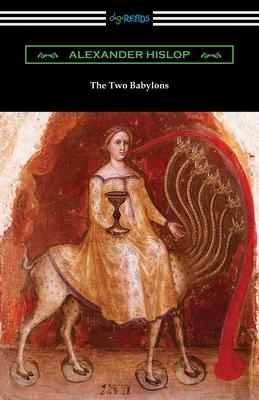First published in 1853, "The Two Babylons" is a religious work by the Scottish theologian Alexander Hislop, a prominent leader of the Presbyterian Free Church of Scotland. Hislop argues in this influential work that the Catholic Church and the trappings of the papacy have their roots in the religion of ancient Babylon as described in the Bible. Hislop draws many parallels in his comparison of the traditions, holidays, and ceremonies of the Catholic Church throughout history to the practices of the religion founded by the Biblical king Nimrod and his wife Semiramis. Hislop relies on the descriptions of the Babylonian religious traditions in the book of Revelation in the Bible and in the apostle Paul's writings from the first century. He was also inspired by the findings of English archaeologist Austen Henry Layard and his excavations at Nineveh, which was discovered in 1851. The author found many comparisons between the ancient gods found in the forgotten city and modern Catholic holidays and traditions. "The Two Babylons" was controversial when it was first published for its criticism of the Catholic Church and its theories continue to be debated to this day. This edition is printed on premium acid-free paper.

First published in 1853, "The Two Babylons" is a religious work by the Scottish theologian Alexander Hislop, a prominent leader of the Presbyterian Free Church of Scotland. Hislop argues in this influential work that the Catholic Church and the trappings of the papacy have their roots in the religion of ancient Babylon as described in the Bible. Hislop draws many parallels in his comparison of the traditions, holidays, and ceremonies of the Catholic Church throughout history to the practices of the religion founded by the Biblical king Nimrod and his wife Semiramis. Hislop relies on the descriptions of the Babylonian religious traditions in the book of Revelation in the Bible and in the apostle Paul's writings from the first century. He was also inspired by the findings of English archaeologist Austen Henry Layard and his excavations at Nineveh, which was discovered in 1851. The author found many comparisons between the ancient gods found in the forgotten city and modern Catholic holidays and traditions. "The Two Babylons" was controversial when it was first published for its criticism of the Catholic Church and its theories continue to be debated to this day. This edition is printed on premium acid-free paper.